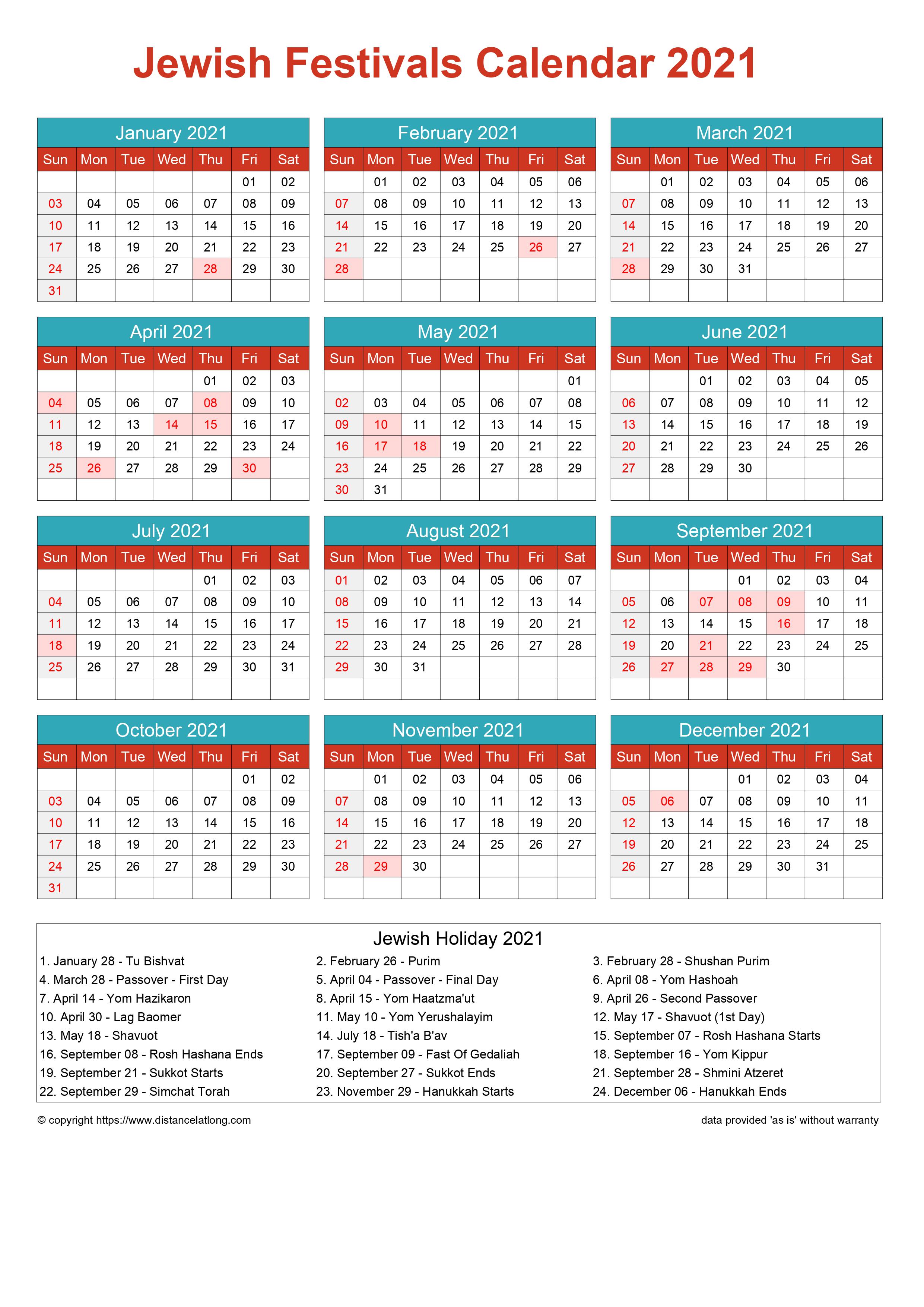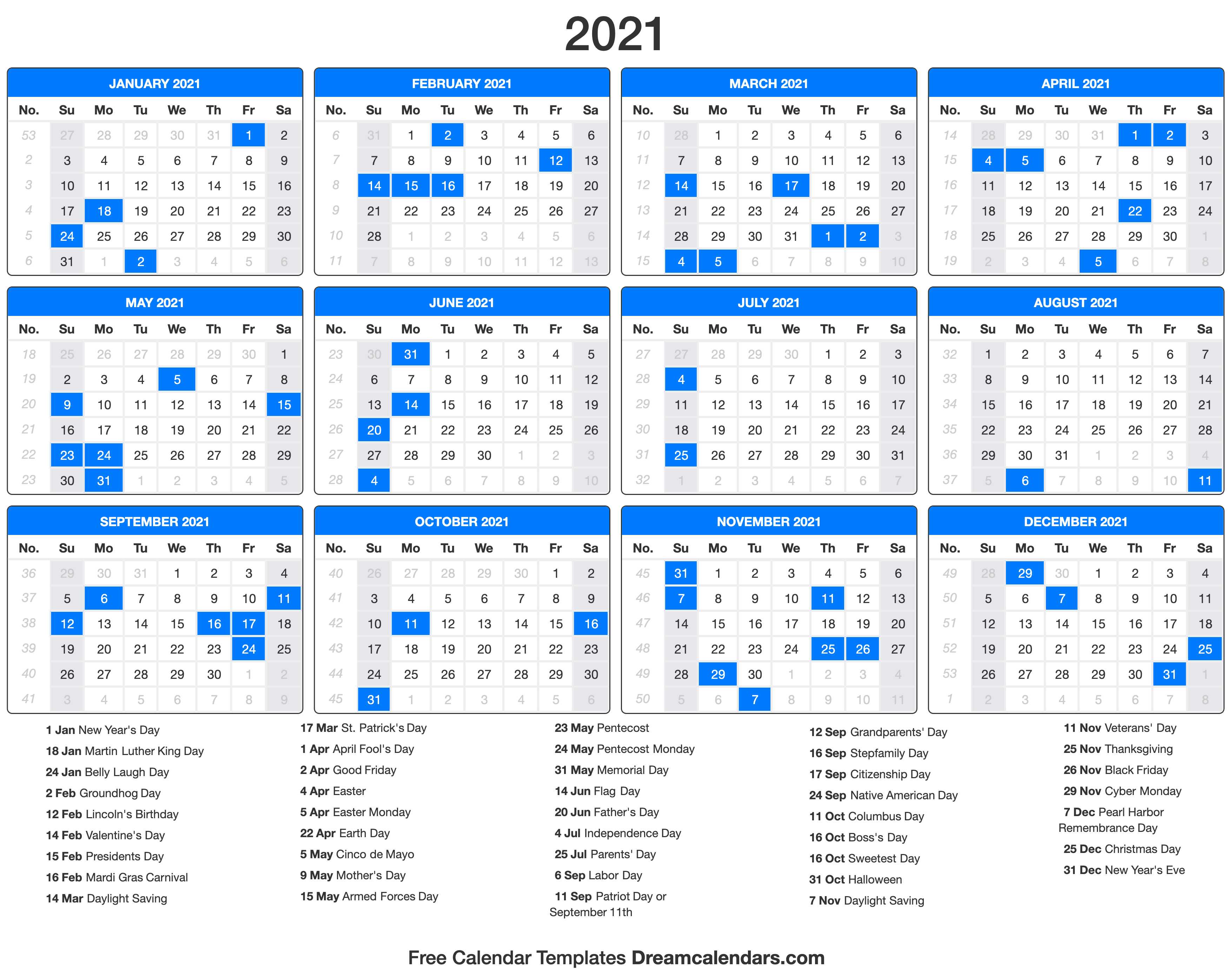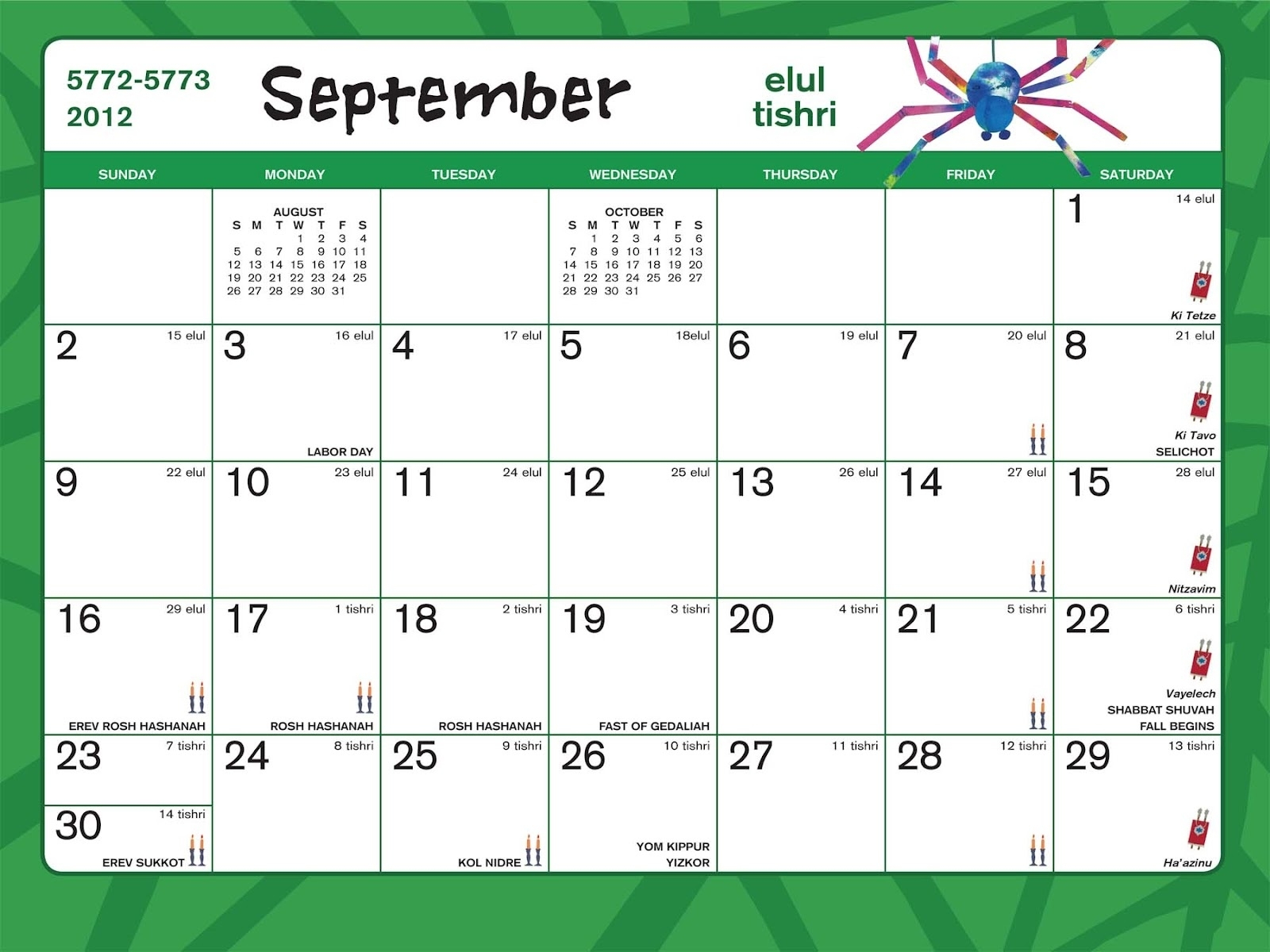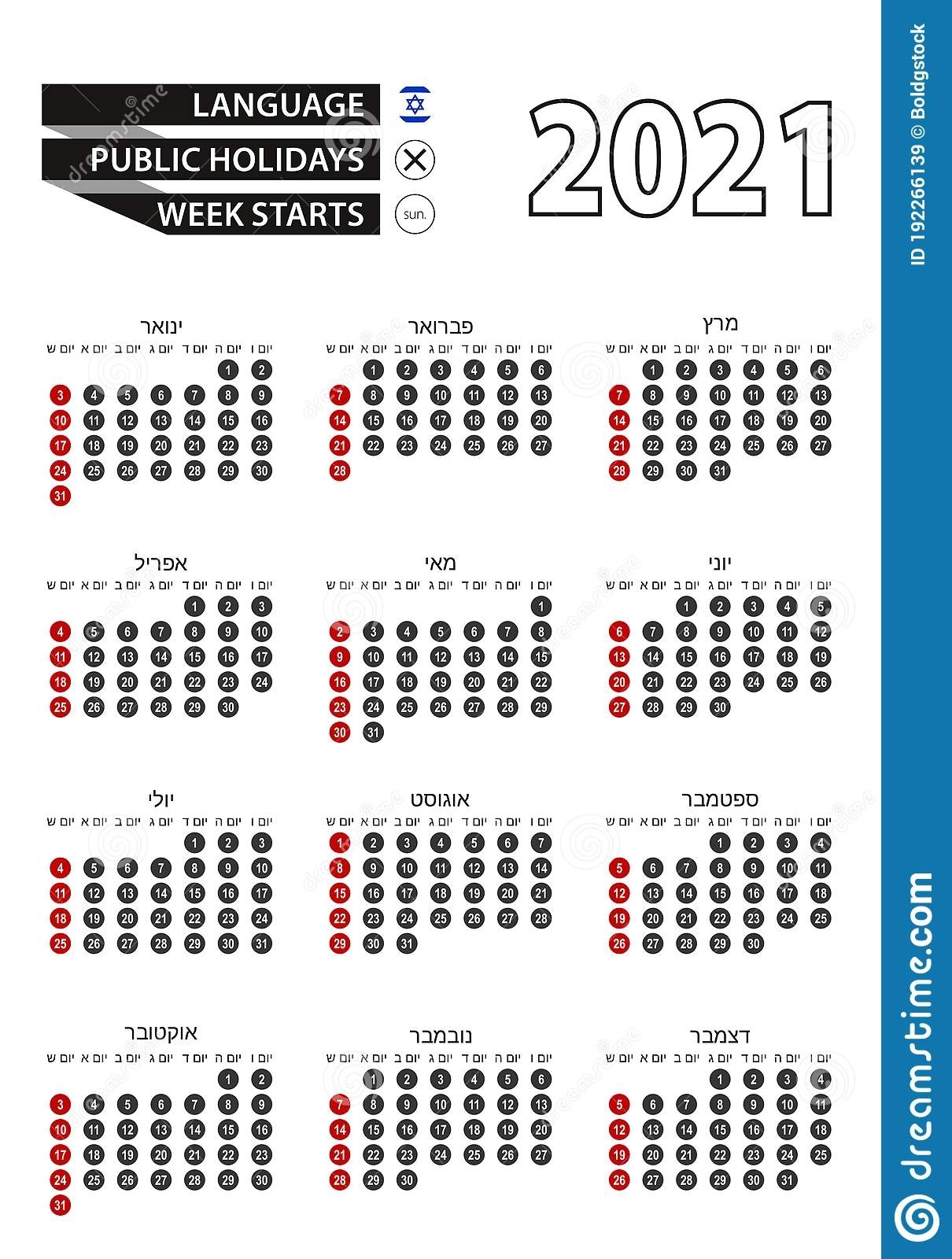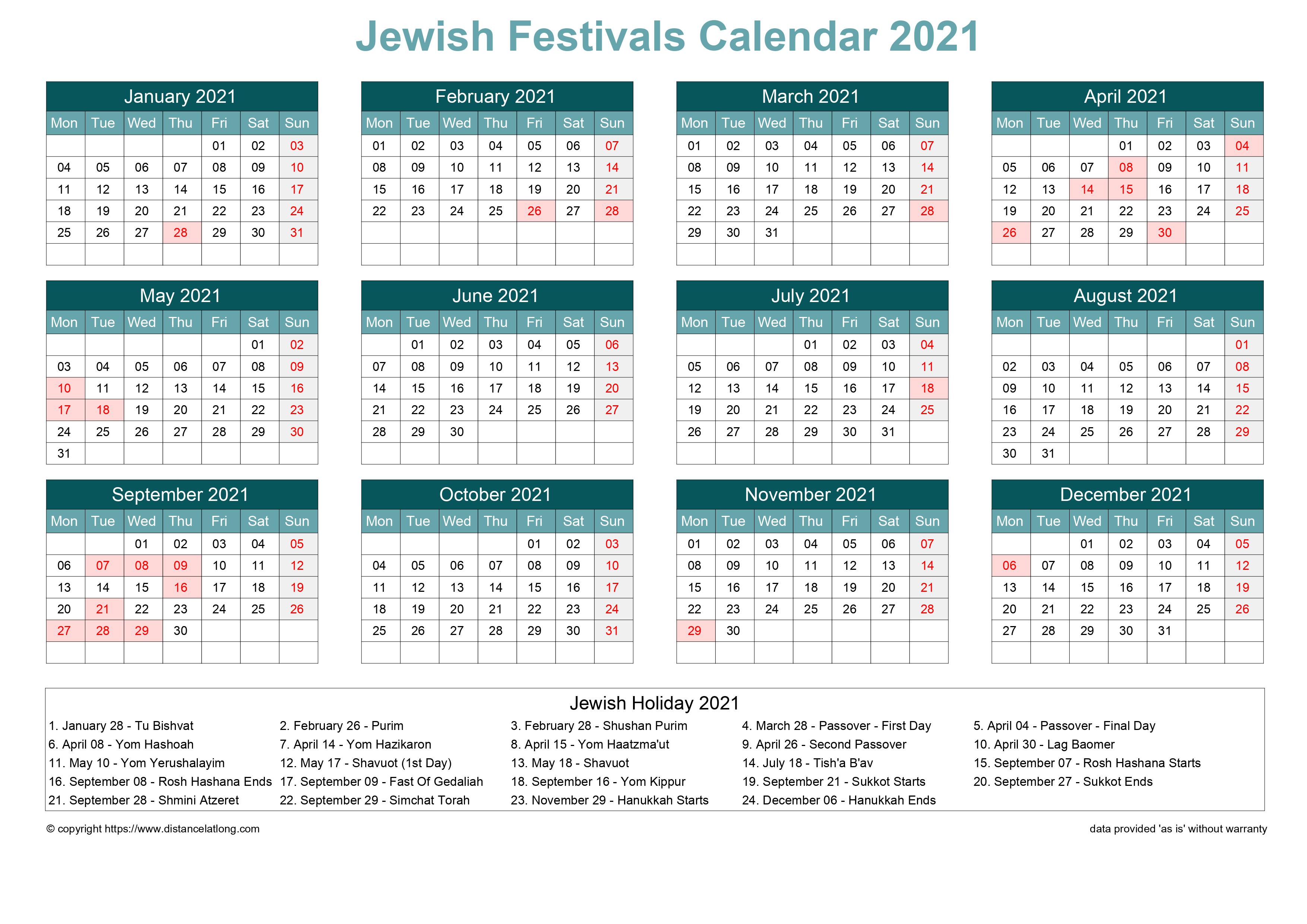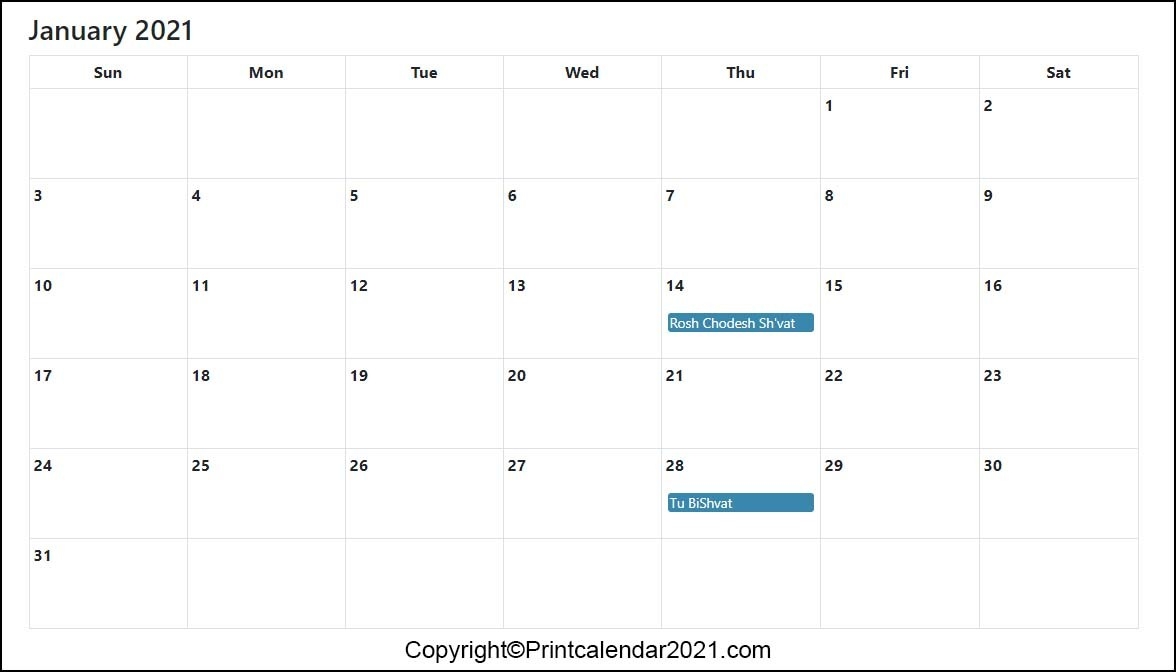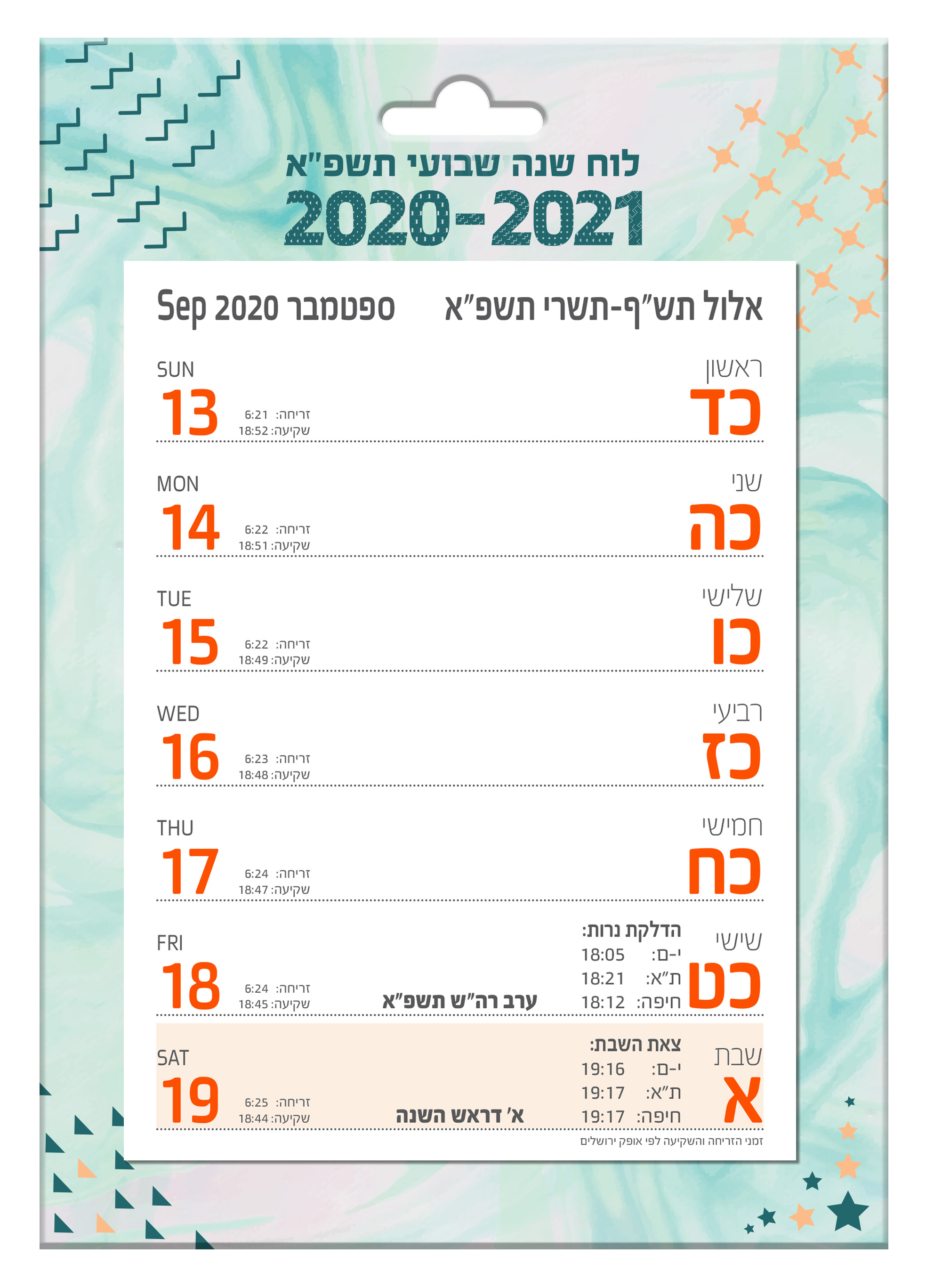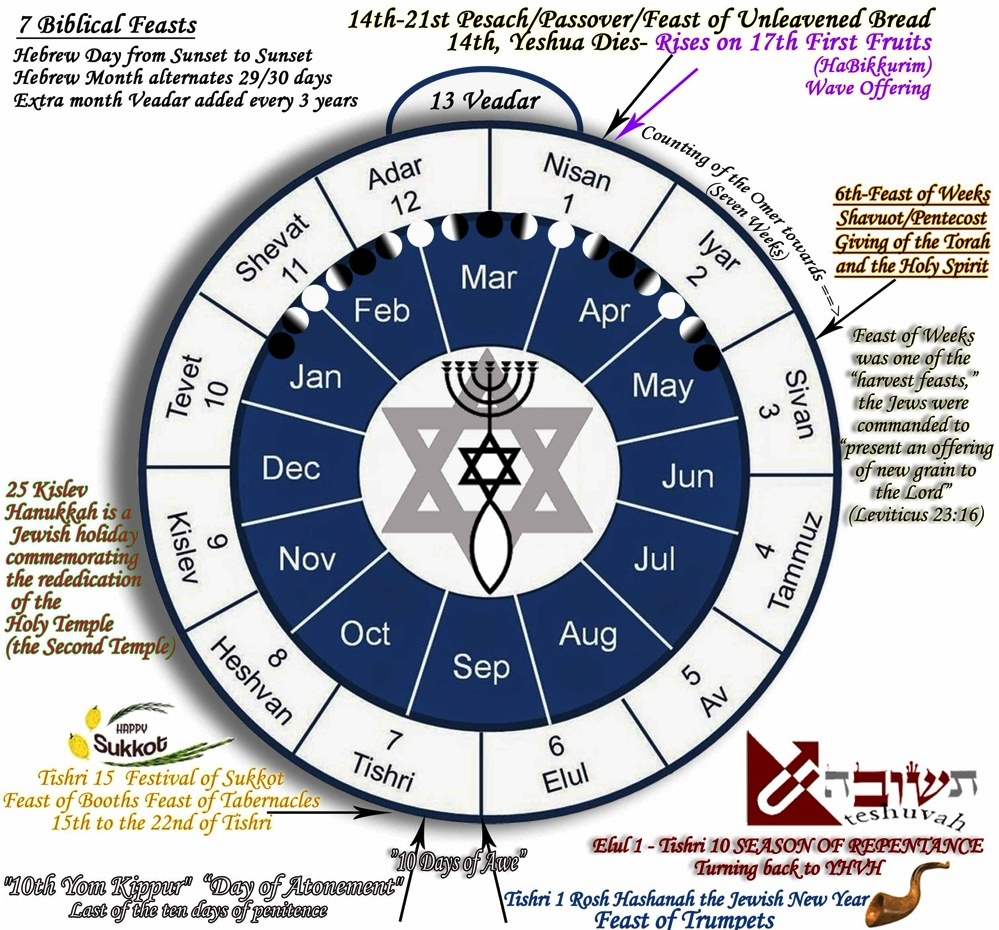Shavuot is a 2-day festival celebrated 7 weeks after the 2nd day of Pesach, commemorating the giving of the Ten Commandments to the Jewish Nation on Mount Sinai. During this festival, dairy meals are eaten and greenery is placed around the house and at synagogue. Families go to a synagogue to hear a reading of the Ten Commandments. Both days of this festival are holy days of rest, when prayer services are held and various works are forbidden.
This is a nine-day festival celebrating the travels of the Jewish nation in the desert en-route to Israel. During the first eight days of this festival meals are eaten in outdoor huts with covers made of tree branches called 'Succahs'. The last day of this festival is called Simchat Torah, when reading of the Torah Scroll is celebrated. The first and last two days of this festival are holy days of rest, when prayer services are held and various works are forbidden.
The Jewish New Year is a two-day festival celebrated by prayers at synagogue and by shared family meals. Both days of this festival are holy days of rest, on which various works are forbidden. Unlike other Jewish fast days, it is not observed in mourning or to commemorate events in Jewish history.
Yom Kippur is the Day of Atonement and is primarily connected to Rosh Hashanah, Sukkot, and the High Holiday cycle in the month of Tishrei (September/October). The details of this holiday are best understood in the context of these holidays rather than in the context of other Fast Days. Hanukkah, one of the most widely observed Jewish holidays, is a festive eight-day celebration that for many people falls during the darkest, coldest season of the year. Also called the Festival of Lights, the holiday brings light, joy, and warmth to our homes and communities as we celebrate with candles, food, family, and friends. Unlike modern New Year's celebrations, which are often raucous parties, Rosh Hashanah is a subdued and contemplative holiday. Because Jewish texts differ on the festival's length, Rosh Hashanah is observed for a single day by some denominations and for two days by others.
Work is prohibited, and religious Jews spend much of the holiday attending synagogue. Because the High Holy Day prayer services include distinct liturgical texts, songs and customs, rabbis and their congregations read from a special prayer book known as the machzor during both Rosh Hashanah and Yom Kippur. This means that from year to year, from the perspective of the solar Gregorian calendar, the Jewish holidays "shift" over a three to four week period of time. Thus, for example, the Jewish New Year of Rosh Hashana can fall from early September to early October depending upon the date of the new moon.
Jewish holidays start in the evening, before sunset, and go until nightfall one or two days following. Pesach is an eight-day festival celebrating the Exodus of the Jewish people from Egypt over three thousand years ago - 'from slavery to freedom'. Traditional to Pesach is the Seder meal, usually held in a family setting incorporating many symbolic procedures emulating the Exodus. One of the major Pesach laws is not to eat any leaven or leaven products, including bread, and to eat Matzah for the duration of the festival. The first and last two days of this festival are holy days of rest in which prayer services are held and various works are forbidden. As part of the celebration, the Torah scrolls are taken from the ark and carried or danced around the synagogue seven times.
During the Torah service, the concluding section of the fifth book of the Torah, D'varim , is read, and immediately following, the opening section of Genesis, or B'reishit as it is called in Hebrew, is read. This practice represents the cyclical nature of the relationship between the Jewish people and the reading of the Torah. The fast commemorates the violent death of Gedaliah, a Babylonian-appointed governor who led the Jewish people for a brief period following the destruction of the First Temple. Gedaliah's death marked the end of Jewish autonomy and resistance against the Babylonian invaders. The fast falls on the third day of Tishrei (September/October), placing it immediately after the observance of Rosh Hashanah. According to the Talmud, this fast was instituted to demonstrate that the death of the righteous is likened to the destruction of the Temple, the destruction being the main reason for most of the other fast days.
Often called "the Birthday of the World," Rosh Hashanah is a time of discovery, introspection and new beginnings. Wishes for a sweet new year are expressed in foods such as crispy autumn apples dipped in honey, tzimmes , rich honey cake and Sephardic tispishti . Other foods, such as carrots cut into rounds like coins and black-eyed peas are eaten for prosperity while round challahs symbolize long life and eternity. On the holiday eve, Sephardic Jews sit down to a special "seder" to welcome the new year with seven symbolic foods and blessings. Throughout the year, Jewish holidays are wonderful times for gathering with family and friends. Favorite holiday memories and traditions often center around food – sweet honey cake at Rosh Hashanah, crispy potato latkes at Hanukkah, tender matzah balls at Passover and so much more.
The special foods associated with Jewish holidays vary according to people's cultural heritage and family customs, with delicious differences between Ashkenazic and Sephardic (Spanish/Middle Eastern) traditions and flavors. For all of us, the special aromas and flavors of Jewish foods fill our senses and add to our celebrations. Tisha b'Av, the Ninth of Av (July/August), is a major fast in the Jewish calendar.
Traditionally, Jews fast for 25 hours in commemoration of the destruction of the Holy Temple in Jerusalem. According to tradition, both the First and Second Temples were destroyed on this date in 587 BCE and 70 CE, respectively. In addition to abstaining from food and drink, the observance of Tisha b'Av includes not washing, bathing, anointing the skin, wearing leather, or engaging in marital intimacy.
The Book of Lamentations and penitential, liturgical poems known as Kinnot are read in the synagogue. To heighten the sense of mourning, lights are dimmed and people sit on the floor or on low stools as they would while sitting Shiva. Work is avoided, and the wearing of Tallit and Tefillin , usually done in the morning, is delayed until afternoon prayers. A day of fasting and lamentation, it also represents the need for tikkun, repair of our incomplete world. In preparation, some maintain a simple, all-dairy diet for the week preceding the Tisha b'Av. Rosh Hashanah, the Jewish New Year, is one of Judaism's holiest days.
Meaning "head of the year" or "first of the year," the festival begins on the first day of Tishrei, the seventh month of the Hebrew calendar, which falls during September or October. Rosh Hashanah commemorates the creation of the world and marks the beginning of the Days of Awe, a 10-day period of introspection and repentance that culminates in the Yom Kippur holiday, also known as the Day of Atonement. Rosh Hashanah and Yom Kippur are the two "High Holy Days" in the Jewish religion. They are customarily eaten along with other sweet foods to symbolize a sweet new year.
During Rosh Hashanah, and just before the holiday begins, you will see round challah , often with raisins, inside in many bakeries. The round shape of the bread is symbolic of the circle of life and the yearly cycle. Along with other sweet baked goods, one of the most popular treats for Rosh Hashanah is honey cake.
It is also traditional to eat fruit, like pomegranates, that have not yet been eaten during the season. Since they are ripe this time of year, they taste extra sweet and delicious. Rosh Hashanah in Israel is one of the most special and meaningful times of the year – Happy new year to those who celebrate!
The Jewish New Year is called Rosh Hashanah and usually falls during September or early October. Rosh Hashanah is a two-day holiday which celebrates the start of the new year according to the Jewish calendar. Businesses across Israel will be closed on both days, so bear this in mind if you are in Israel during the period. In 2021, Rosh Hashanah will begin at sundown on September 6th and end at sundown on September 8th.
In many ways, being in Israel during Rosh Hashanah is like Shabbat where most businesses are closed. It is celebrated on the fifth day of the Jewish month of Iyar, and centres around the deceleration of the state of Israel by David Ben Gurion in Tel Aviv on May 14, 1948 , and the end of the British Mandate of Palestine. It is observed through joyous festive activities and serving Israeli style foods.
It is also common to decorate public and private spaces with Israeli flags and the like. Yom Kippur is a day of atonement and is considered a holy day of rest on which various works are forbidden. The name "Rosh Hashanah" translates from Hebrew to mean "the head of the year," and the holiday marks the start of the Jewish New Year. During the two-day celebration, your Jewish friends or coworkers might take time away from work to attend synagogue, eat foods such as apples and honey or say prayers near a body of water.
Rosh Hashanah is celebrated on the first day of the Hebrew month of Tishrei, which— because of differences in the solar and lunar calendar—corresponds to September or October on the secular calendar. Customs associated with the holiday include sounding the shofar, eating a round challah, and tasting apples and honey to represent a sweet New Year. Also, the day inaugurates a traditional three-week period of mourning which culminates in the major fast for the Temple's destruction on the Ninth of Av. During this time, many observant Jews refrain from cutting hair, holding public celebrations, and listening to some forms of music. The final nine days of these three weeks is observed as a more intense level of mourning and many forgo meat and wine.
Rosh Hashanah observances include special foods, traditions and mitzvahs, or commandments, and celebrations can vary from family to family. Many people attend services at a temple or synagogue, where a special service is held with messages of hope and atonement in the new year. Yom Kippur comes on the last of the 10 days of repentance that began with Rosh Hashanah. The day is usually observed with a fasting and extended time in deep prayer, before ending with a the sounding of a "shofar," a trumpet made from a ram's horn.
The first recorded holiday celebrating religious freedom, Hanukkah commemorates the rededication of the temple in Jerusalem, wrecked by idol worshippers and recaptured by the Maccabees and their followers around 165 BCE. Only one day's worth of sacramental oil for the Eternal Light was found, but miraculously it lasted the eight days needed to prepare more. Thus, Hanukkah is known as the Festival of Lights – with one more candle on the nine-branched menorah lit each night – and also the festival of fried foods! It's a good excuse for parties and eating potato latkes and foods fried in oil.
Sephardim enjoy bimuelos, fried doughnuts sprinkled in cinnamon and sugar or coated in honey. Israelis popularizedsufganiot, gooey jelly doughnuts, to Hanukkah festivities. A holiday known more for its lack of food, Yom Kippur – the Day of Atonement – is a time to reconcile with each other and with God. Prayer and fasting force us to suspend our daily existence; physical abstinence deepens us spiritually with greater appreciation for our everyday life. The evening break-fast is often a light meal of dairy foods such as sweet noodle kugel, cheesy blintzes, eggs, salads, bagels and fish such as herring, whitefish and lox. For Turkish Jews, the traditional first break-fast taste is delicious homemade preserves of quince and other fruits served with a rehydrating glass of water.
On the Hebrew calendar, the new day starts at sundown – so Jewish holidays begin at sundown. People often refer to the first day of a holiday using the Gregorian day and use the word "erev" to refer to the first night – i.e., the night before – when the holiday begins. The first day of Passover might be a Tuesday, but the holiday would start on the Monday night before – Erev Passover – which is when the first seder would be held. Private Tours in IsraelPrivate tours in Israel allow us to custom build the perfect tour for you. Shemini Atzeret is a "cap" on the just-completed week of festivities.
The day's celebration includes festive processions with the Torah scrolls, including much singing and dancing. Shemini Atzeretis mentioned in theBible, but its exact function is unclear. InSecond Templetimes, it appears to have been a day devoted to the ritual cleansing of the altar in the Temple. With the destruction of the Temple in 70 CE, this function of the day became obsolete. The Fast of Esther is a minor fast in the Jewish calendar and is observed on the thirteenth of Adar (February/March), the day before Purim.
It commemorates the three days that Queen Esther and the Jews of Shushan fasted before she approached the king to intercede for her people. Given the intense joy and frivolity associated with Purim, the Fast of Esther helps illustrate the trepidation that seized the Jewish community in Shushan before they were delivered from the threat of the wicked Haman. However, you observe, Shabbat is a great day to hang out with family and friends, eat a lot, take walks, study Torah, sing songs, read stories to children, take a nap and just chill out. The end of Shabbat is traditionally marked by a ritual called Havdalah during which songs are sung and blessings are said over wine/grape juice, spices, and light , separating Shabbat from the rest of the week.
If you are in Israel during the Rosh Hashanah holiday, one of the best ways to experience the holiday is by visiting a synagogue to hear the prayers. Jews attend quite lengthy synagogue services and recite special prayers and liturgical songs written over the centuries. These vary between Jews who have developed different prayers based on where they were living for hundreds of years.
Beginning on Shemini Atzeret and lasting untilPesach, a short prayer for rain is inserted into the second blessing of theAmidah Prayer. It is traditional to include theYizkor, or memorial service, as part of the liturgy for this day. The final portion of theBook of Deuteronomyis read in the synagogue followed by the beginning of theBook of Genesis. In this manner, the annual cycle of Torah readings continues unbroken.
Tisha B'Av is an annual fast day, on which a number of disasters in Jewish history occurred, primarily the destruction of both the First Temple by the Babylonians and the Second Temple by the Romans in Jerusalem. Chanukah, the festival of lights, is an eight-day festival commemorating the rededication of the Temple in Jerusalem many centuries ago. It is celebrated by lighting on each night of the festival an eight-pronged candelabra, called a Chanukiah. It is also customary to eat oily foods such as doughnuts and latkes and to play games of Dreidel. The centerpiece of the Rosh Hashanah service is the blowing of the shofar during morning prayers. Both days are full public holidays and, as on the Sabbath, there will be no public transportation or newspapers.
In addition, many businesses, museums and other institutions, which are normally open on the Sabbath, will be closed over the holiday. The period preceding the Jewish New Year is marked by special penitential prayers, recited before the regular morning prayers, and the blowing of the ram's horn after the morning prayer service. These special prayers are said daily until the day before Yom Kippur. Sukkot, a Hebrew word meaning "booths" or "huts," refers to the Jewish festival of giving thanks for the fall harvest. It also commemorates the 40 years of Jewish wandering in the desert after the giving of the Torah atop Mt. Sinai. Sukkot is celebrated five days after Yom Kippur on the 15th of the month of Tishrei and is marked by several distinct traditions.
One, which takes the commandment to dwell in booths literally, is to erect a sukkah, a small, temporary booth or hut. Sukkot are commonly used during the seven-day festival for eating, entertaining, and even for sleeping. Sukkot also called Z'man Simchateinu , is the only festival associated with an explicit commandment to rejoice.
A final name for Sukkot is Chag HaAsif, , representing a time to give thanks for the bounty of the earth during the fall harvest. Holidays noted in italic are holy days on which no work is permitted and absences from school or work should be excused. On Asarah B'Tevet, the 10th day of the Jewish month of Tevet, in the year 3336 from Creation , the armies of the Babylonian emperor Nebuchadnezzar laid siege to Jerusalem. Asarah B'Tevet is observed as a day of fasting, mourning and repentance. For several centuries, the 17th day of the Jewish month of Tammuz has been observed as a minor fast and is most closely associated with the events surrounding the destruction of the Second Temple in Jerusalem by the Romans in 70 CE.




